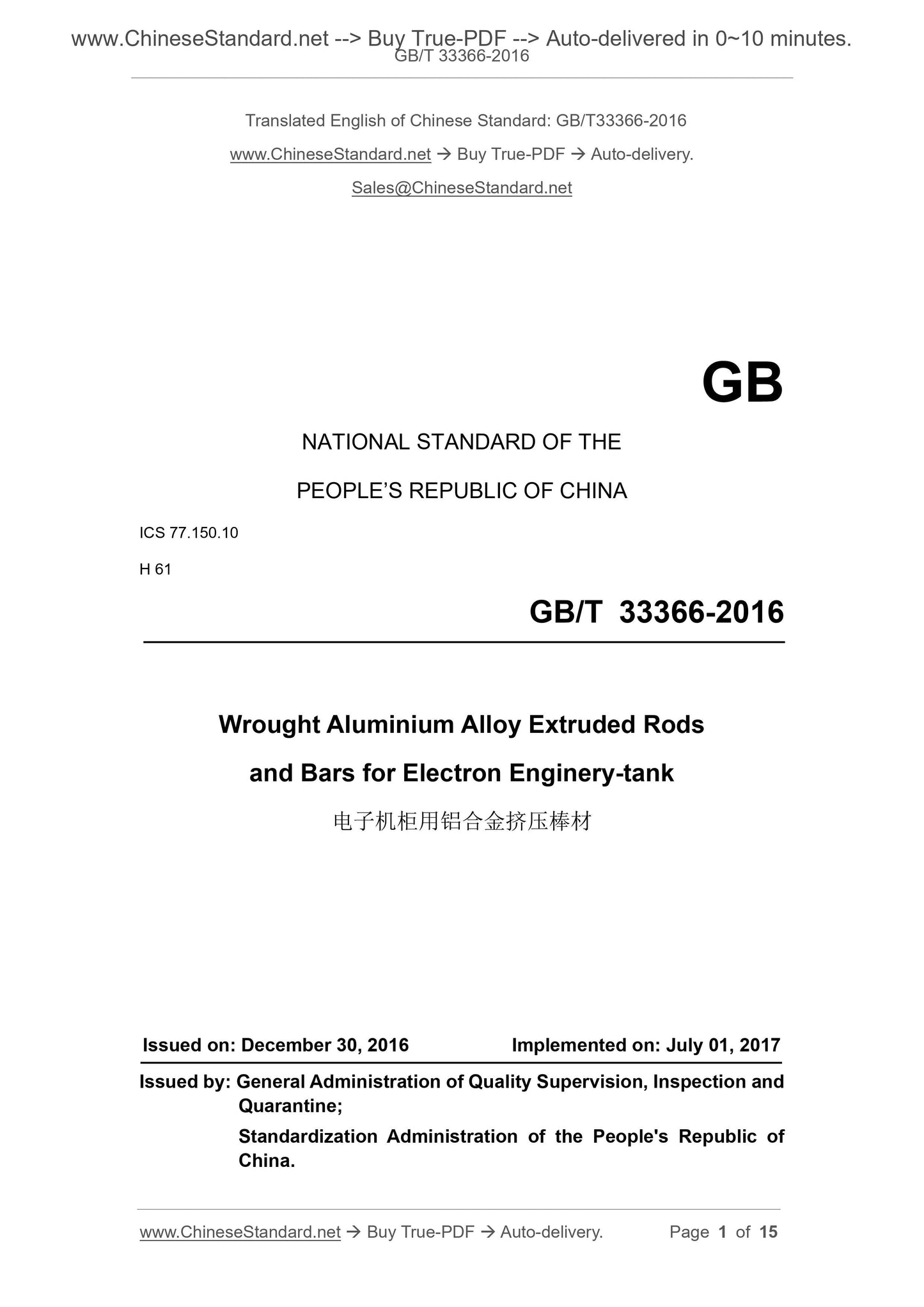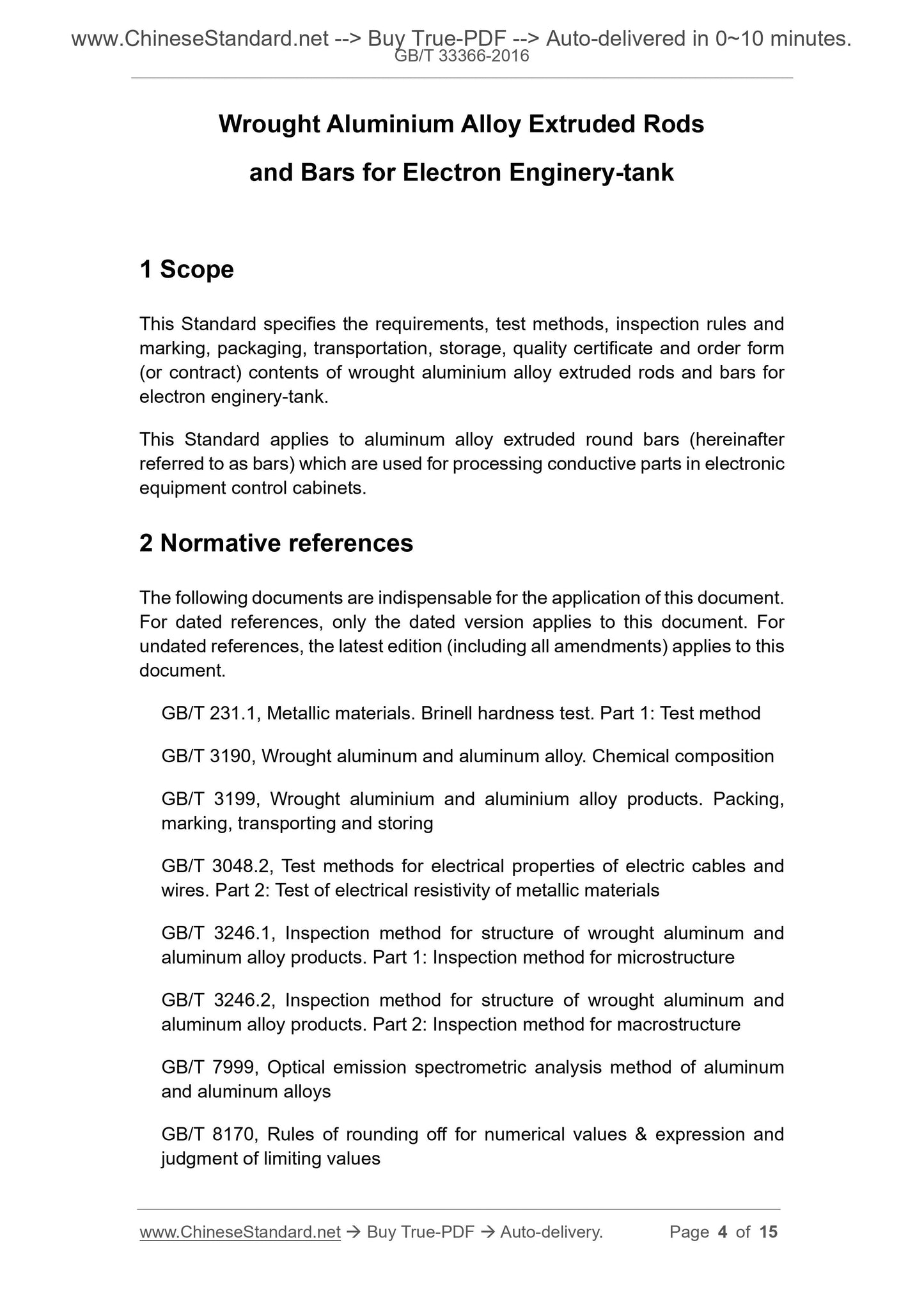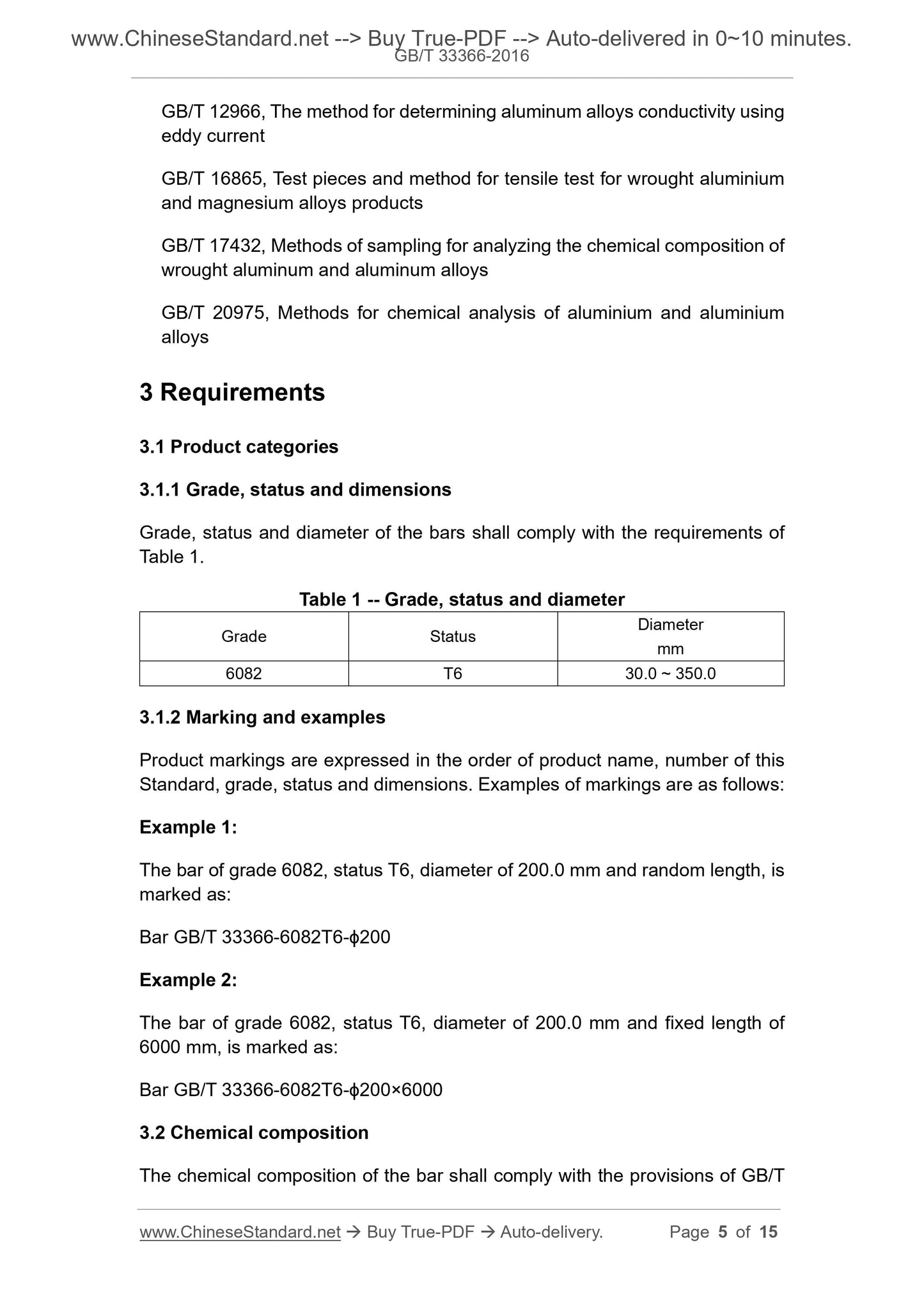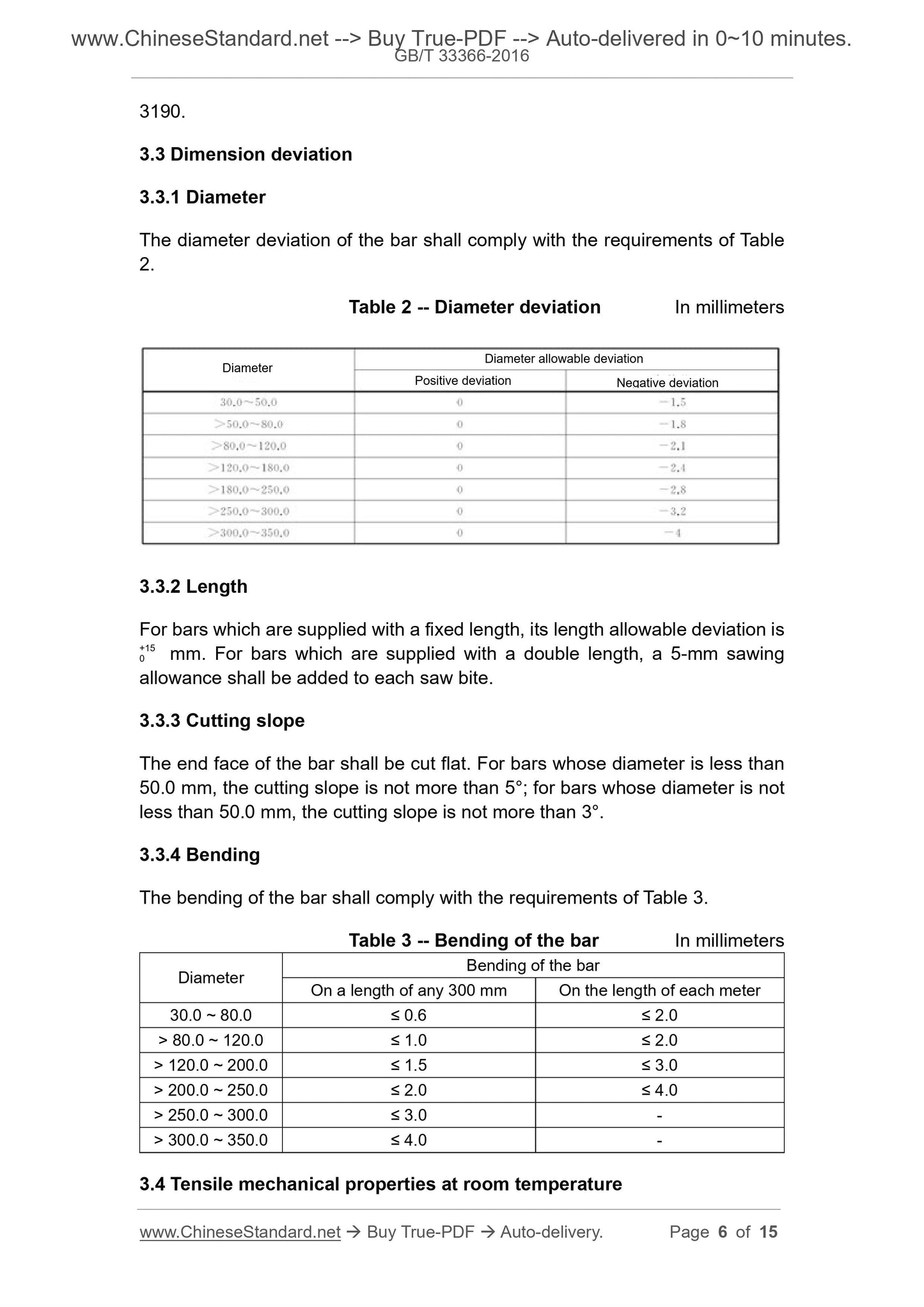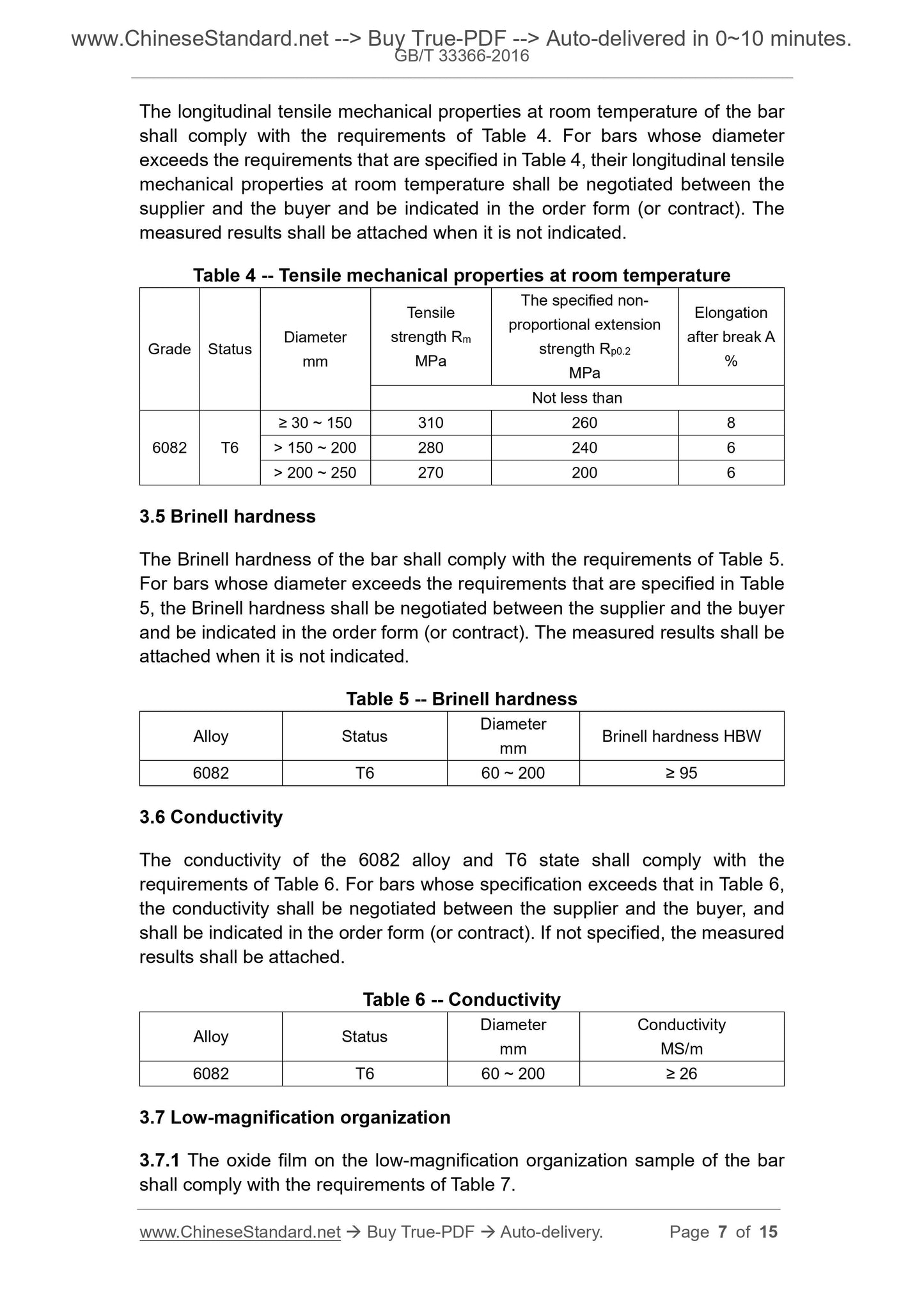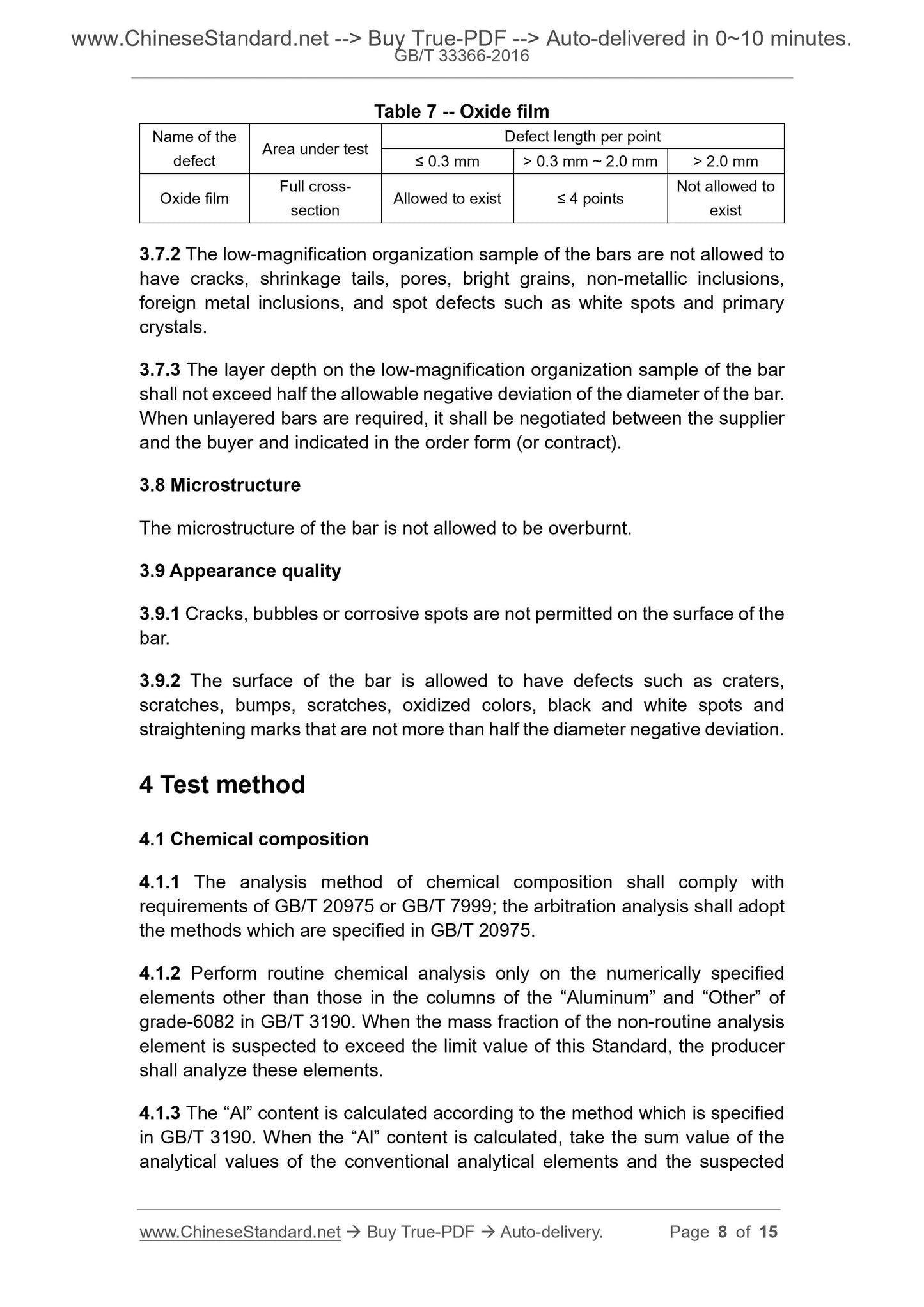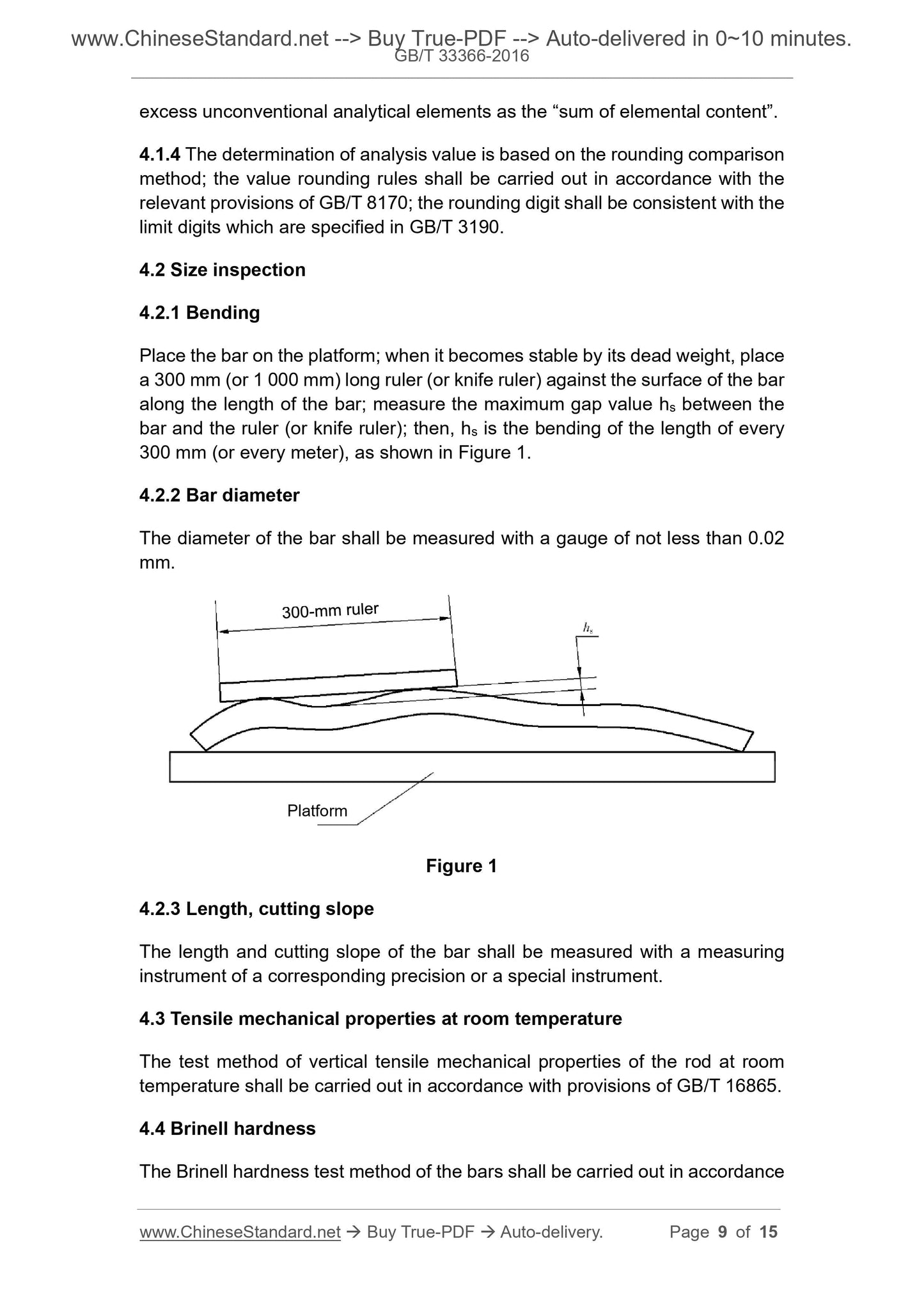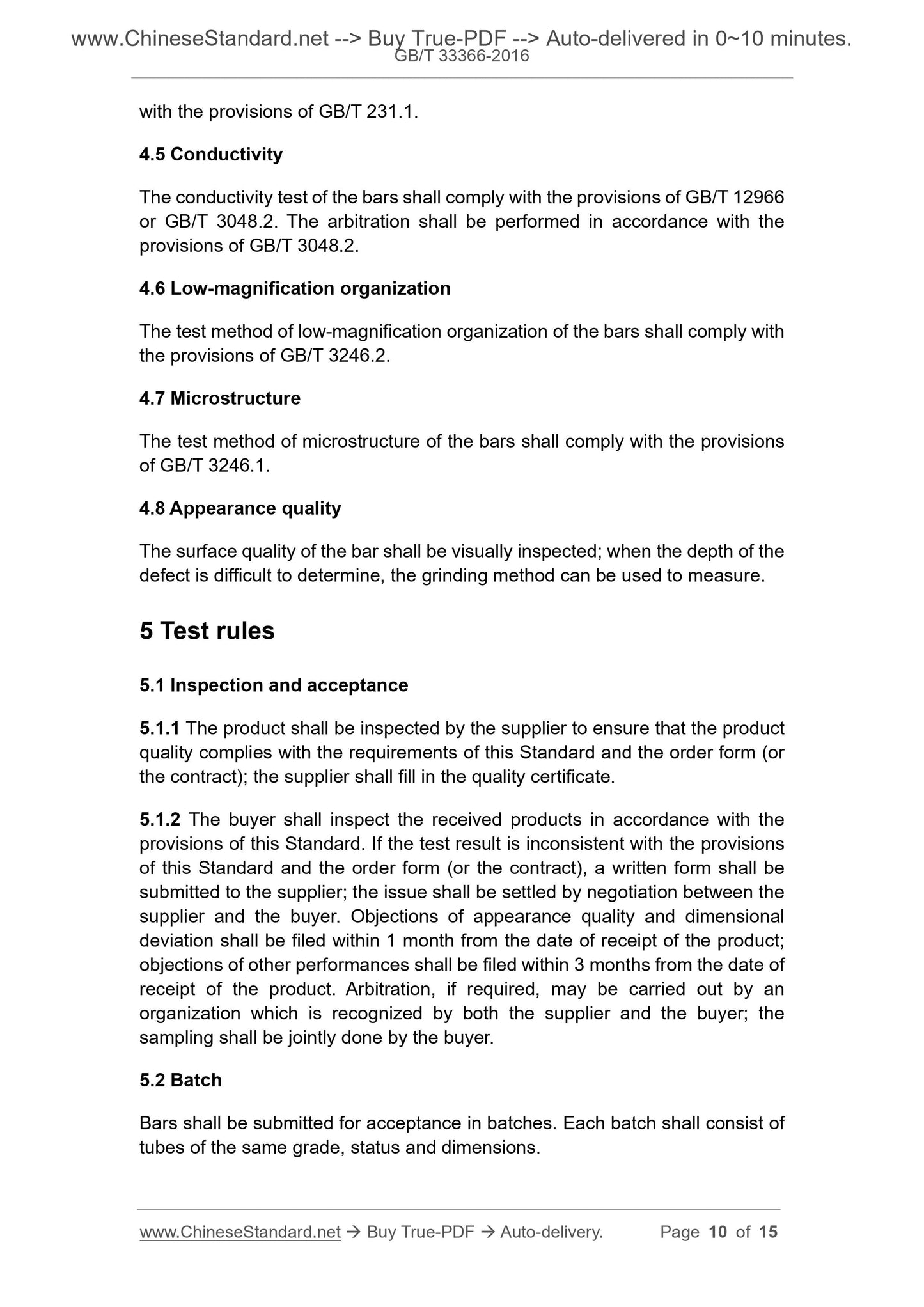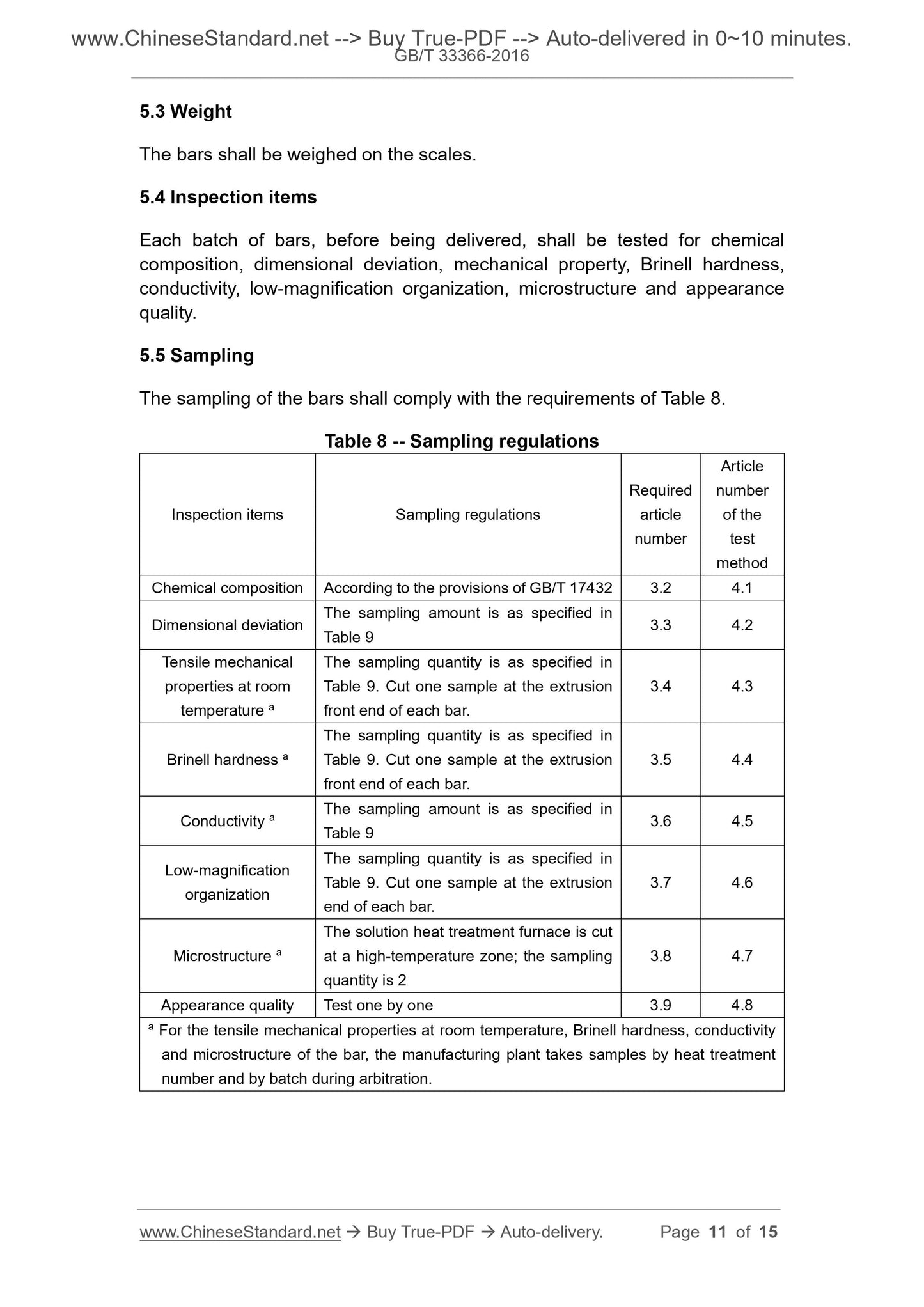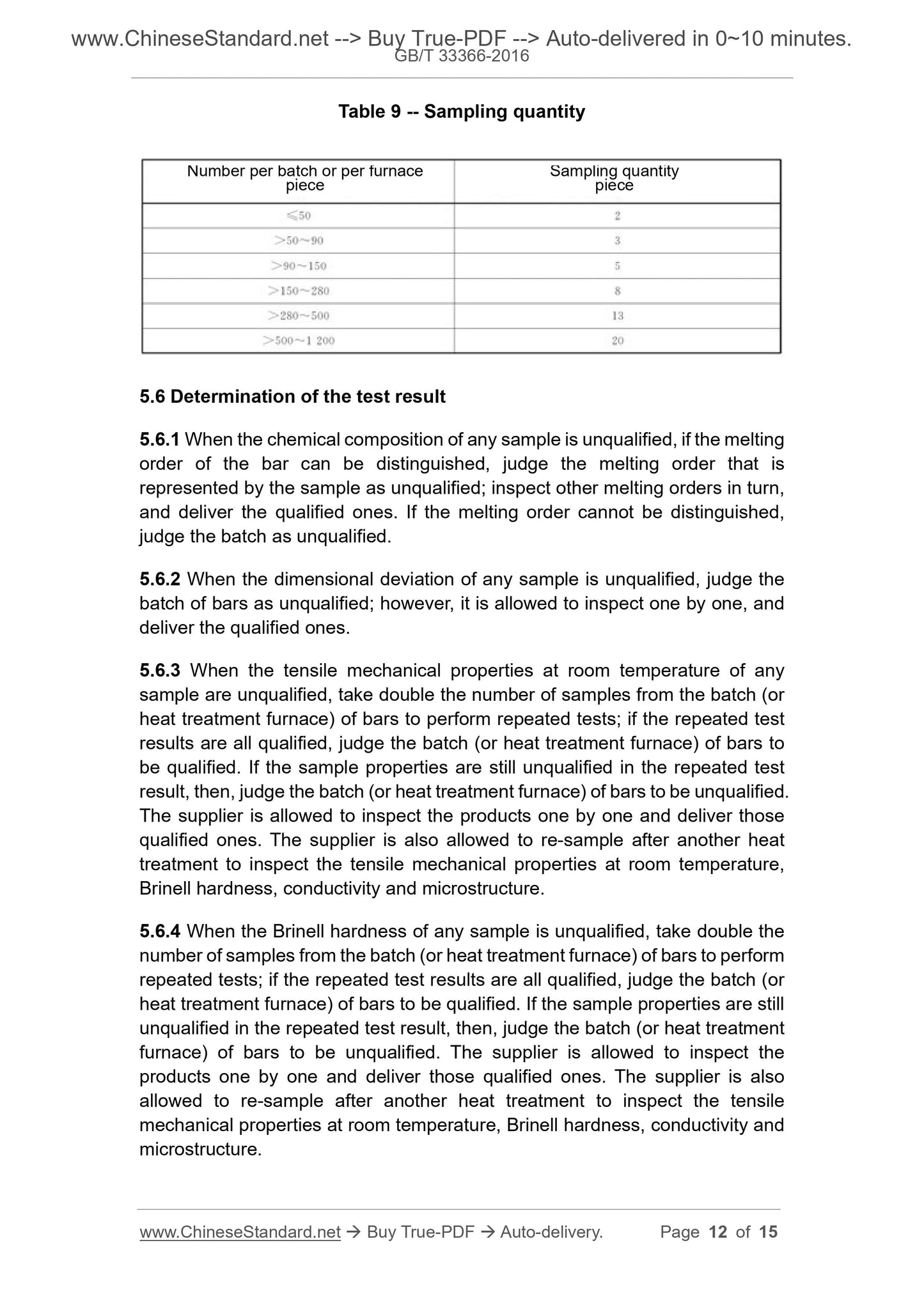1
/
of
12
www.ChineseStandard.us -- Field Test Asia Pte. Ltd.
GB/T 33366-2016 English PDF (GB/T33366-2016)
GB/T 33366-2016 English PDF (GB/T33366-2016)
Regular price
$150.00
Regular price
Sale price
$150.00
Unit price
/
per
Shipping calculated at checkout.
Couldn't load pickup availability
GB/T 33366-2016: Wrought Aluminium Alloy Extruded Rods and Bars for Electron Enginery-tank
Delivery: 9 seconds. Download (and Email) true-PDF + Invoice.Get Quotation: Click GB/T 33366-2016 (Self-service in 1-minute)
Newer / historical versions: GB/T 33366-2016
Preview True-PDF
Scope
This Standard specifies the requirements, test methods, inspection rules andmarking, packaging, transportation, storage, quality certificate and order form
(or contract) contents of wrought aluminium alloy extruded rods and bars for
electron enginery-tank.
This Standard applies to aluminum alloy extruded round bars (hereinafter
referred to as bars) which are used for processing conductive parts in electronic
equipment control cabinets.
Basic Data
| Standard ID | GB/T 33366-2016 (GB/T33366-2016) |
| Description (Translated English) | Wrought Aluminium Alloy Extruded Rods and Bars for Electron Enginery-tank |
| Sector / Industry | National Standard (Recommended) |
| Classification of Chinese Standard | H61 |
| Classification of International Standard | 77.150.10 |
| Word Count Estimation | 10,154 |
| Date of Issue | 2016-12-30 |
| Date of Implementation | 2017-07-01 |
| Regulation (derived from) | National Standard Notice No.27 of 2016 |
| Issuing agency(ies) | General Administration of Quality Supervision, Inspection and Quarantine of the People's Republic of China, Standardization Administration of the People's Republic of China |
Share
